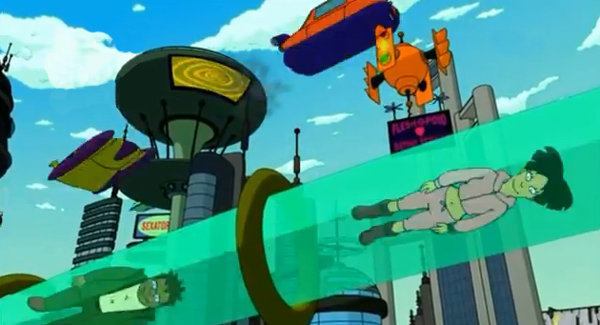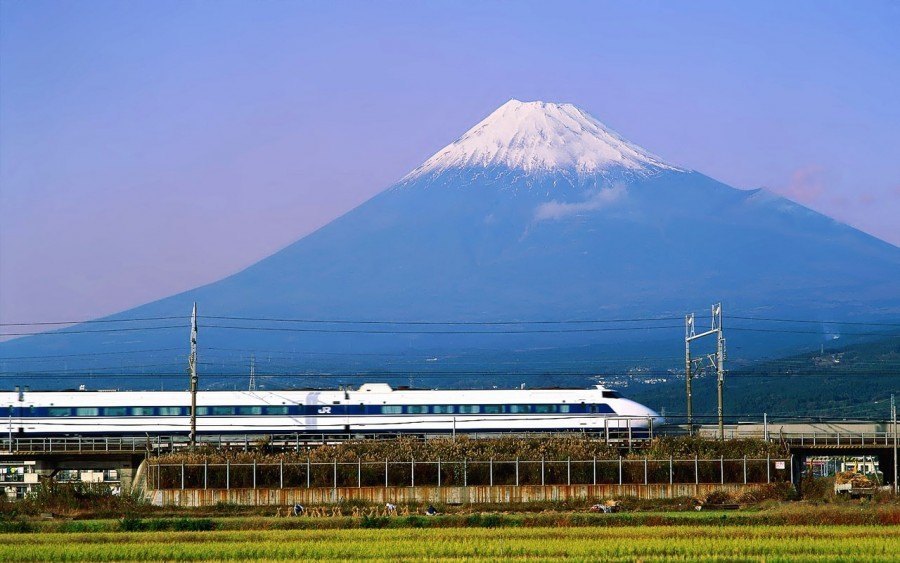Like this post? Help us by sharing it!
It’s here: Japan’s first magnetic levitating bullet train, and it has just whisked its first ever passengers on a 500 kph (311 mph) journey between the towns of Uenohara and Fuefuki – a distance of 27 miles. And that’s not even as fast as it can go – in tests in 2003 it hit 581 kph (361 mph), smashing China’s previous record of 475 kph (296 mph).
It may sound like science fiction, but this is science FACT – and you can watch footage of the maglev’s maiden voyage (released by the BBC) below:
[youtube https://www.youtube.com/watch?v=2MsjvsAX-Og&w=420&h=315]
Japan’s high-speed rail network
I can’t talk about the new maglev without getting a few words in about Japan’s current high-speed rail network. Many’s the time that I’ve been sitting on a rail replacement bus all the way across London, forking over upwards of 70 quid for a ticket to Bristol, being glared at by a surly ticket officer, or turning up at my destination two hours late because my first train was late (which then made me miss my connecting train, even though that one was late too), when I’ve thought “this wouldn’t happen in Japan”.
Japan’s transportation system is so famous for its efficiency that it has become a cliche. Ask any foreigner in Japan what they love most about the country and I’ll bet my bottom dollar that they’ll mention some permutation of the following: the people, the food, and the public transport system. And that is because Japanese people are really nice, their food is delicious, and their public transport system is nothing short of godly.
Japan’s “bullet train”, called the Shinkansen 新幹線 in Japanese (this, by the by, translates as “new trunk line”, which is a pretty lame name compared to “bullet train” if you ask me), is one of the wonders of the modern world. Let me let you in on a few facts about the bullet train that will make you resent your current commute to work that little bit more:
- The first Shinkansen line (the Tokaido Shinkansen, which still operates today), was opened in 1964. 1964! That’s fifty years ago this year.
- Its maximum operating speed is 320 kph (200 mph). Granted, it’s no maglev, but let me tell you that is still bloody fast.
- It was the world’s first, and continues to be the world’s busiest, high-speed rail network. Over its lifetime, it has transported over 10 billion passengers. (To give you a sense of scale, the current population of the world is about 7 billion. That means the bullet train has transported more passengers than there are people in the world today. Mind blown).
- In 2012, Japan Rail reported that the Shinkansen’s average annual delay was 36 seconds – and wait – this includes delays caused by natural disasters. In 1997, the annual delay was just 18 seconds.
- There have never been any fatalities due to derailments or collisions. Ever.
Phew. Take that British Rail.
And what the facts and figures don’t tell you is that travelling on the bullet train is an exciting and enjoyable experience in itself. Not only does it arrive on time and get you from A to B faster than you can say “please can I have a cup of coffee with my sandwich” – the staff are faultlessly polite (they even bow every time they leave the carriage), it’s clean (you can use the loos without holding your breath), they play a cheery little jingle at every station, and they bring a snack trolley down the aisle every hour or so. And compared with trains in the UK, it’s not even expensive!
Anyway, that’s quite enough of my panegyric to the bullet train for one blog post. I’m sure you’re all excited to hear about what the maglev has in store.

What’s this new-fangled maglev thingamajig?
“Maglev” is short for “magnetic levitation”, which is a kind of transportation that carries vehicles using magnets instead of wheels. This means maglev trains don’t actually touch the tracks, which means much less friction – and consequently a helluvalot more speed.
Maglev may sound like it belongs in a sci-fi movie, but it’s not even a very new concept. Japan has been testing its maglev trains for decades, and the first commercial maglev line opened for business in Shanghai in 2004 – running at speeds of up to 431 kph (268 mph). Considering that a couple of hundred years ago people thought that you’d die if you went faster than 8 mph, the human race has come a pretty long way in a pretty short space of time. And thanks to the maglev, we will soon be able to go a VERY long way in a VERY short space of time.
Nay-sayers question the need for such an expensive, super-high-speed service is needed when Japan already has such a super-quick train network and frequent domestic flights (not to mention a steadily decreasing population), and to be honest, one does have to wonder. But I’ll leave such speculation to the economics boffs, because frankly all I care about is going really fast.

When can I have a go??!!?
Unfortunately, not for a good long while. According to a recent article in the Japan Times, Construction is expected to begin on the maglev track between Tokyo and Nagoya in 2027, and is expected to be extended to Osaka by 2045 – just five years shy of the Shinkansen’s centenary. So basically… don’t hold your breath.
500 kph… pshhh. I’m not impressed. Show me a train that goes at 5,000 kph – then maybe I’ll be impressed.
Oh yeah? Well get this: never one to be left behind, China is already testing a “Super-maglev” concept train that would work the same as a maglev, but would be encased in a vacuum tube to eliminate speed limitations caused by air resistance. Also called a “Vactrain“, these could theoretically reach speeds of up to 6,400-8,000 kph (4,000-5,000 mph). That means you’d be able to get from Beijing to New York in just a couple of hours.

And if that isn’t amazing, I really don’t know what is…would be nice if Japan could do it first though 🙂



